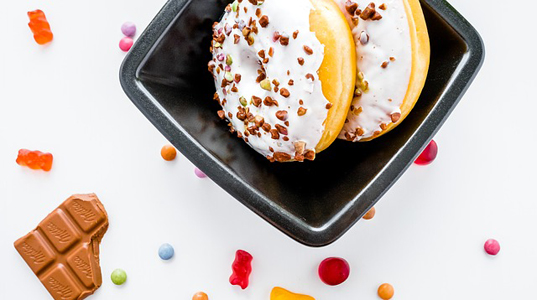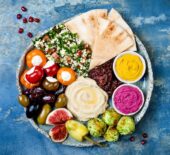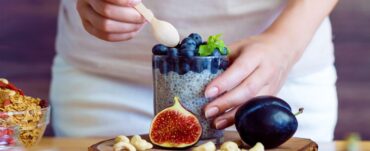Do you find the offer of a slice of chocolate cake too tempting to decline? Added sugar in moderation is part of a healthy balanced life but having too much may be harmful for your body in more ways than one. The types of foods and drinks I am talking about are lollies, cakes, cookies, chocolate, soda. Also, heavily refined and carb heavy foods like takeaway pizza or burger buns, and other sweet foods and drinks which live in the ‘sometimes foods and drinks’ category.
Having too much of these types of foods not only makes achieving and maintaining a healthy weight a challenge but may also be fast forwarding the aging process in your skin. The process which is the culprit of this aging process is called glycation.
The Cambridge dictionary defines glycation as ‘a chemical process in which a sugar molecule bonds (= joins) to a protein or lipid (= fat) molecule, which is linked to some harmful processes in the body.’ Glycation can also occur on your DNA. When this process occurs the damage to the cell forms a product called advanced glycation end product.
Advanced glycation end products have permanently damaged the protein, lipid, or DNA they have attached to and alter the structure of that molecule to become discoloured, inflexible, weak, or inflexible. An example if this process happened to the proteins elastin or collagen, this protein would lose its normal structure, become malformed and change the appearance of your skin from youthful to more aged.
Glycation is enhanced when you have excess sugar in your body as your body can only take on and use a certain amount of sugar at one time. The extra is either stored as fat or becomes glycated.
The amount of glycation that occurs in your body is directly tied to the glycaemic index of a food or glycaemic load of a meal. GI stands for glycemic index and is a ranking given to a food based on how much carbohydrate is in a food and how these carbohydrates will raise your blood sugar levels.
Foods are ranked from 1 to 100 in terms with three groups:
Low GI considered a score from 1-55
Medium GI from 55-70
High GI any score above 70
The higher the score the more quickly the food will raise your blood sugars and consequently your insulin or the hormone needed to take the glucose or sugar from your blood into your cells. An example is puffed rice cereals have a high GI compared to rolled oats with a low GI. The amount of fibre, how the food was cooked, how refined the carbohydrate is, the ripeness, the type of sugar in a food all effects the GI.
The goal for steady and sustained energy release is a healthy state for those who have diabetes but can also assist in healthy cholesterol levels and maintaining a healthy weight. Think about a roller coaster ride compared to a smooth train ride. The roller coaster ride is fun on occasion, but you don’t want to be experiencing this sensation all the time.
The story does not end there though, as your body is affected by not only the quality of the carbohydrates you eat (the GI) but how much carbohydrate is in that food called the glycemic load (GL). To work this out the GI is multiplied by the amount of carbohydrate as a percentage out of 100.
e.g. an apple with a GI of 38 and 13g of carbohydrate = 38 * 13/100 = 5
GL has its own rankings
Low GL 10 or less
Medium GL 11 – 19
High GL 20 or more
The final component is knowing how much a meal is going to affect your blood sugar as generally we eat multiple foods in a meal not just 1. To do this simply ass the GL of each food together. Over a day to keep your GL low the goal is to add up completely to less than 100. This means that you can have a meal with foods with higher GI and not have a negative impact on your blood sugars if most of the other parts of the meal are considered low GI.
Lifestyle Tips
To create a lifestyle of eating which has a lower glycemic load aim to enjoy your ‘sometimes foods and drinks’ which are high in added sugar in moderation. Also, using the healthy plate model which will give your meal a good amount of protein and fibre. These two components help to lower the glycemic load of a meal.
An example of a balanced day of eating could be:
Breakfast
2 pieces of whole grain bread (40g each slice) with 2 poached eggs topped with 40g shredded low fat cheddar cheese and a side of sauteed spinach, mushrooms, and tomato
Snack
1 cup of carrot/celery/capsicum sticks with 30g 100% peanut butter
Lunch
35g wholegrain crackers topped with 1/2 avocado and sauerkraut
Snack
200g no fat Greek yoghurt
Dinner
1/2 cup of quinoa with 100g of steamed salmon and 1 cup of cooked Asian vegetables
Pick Your Method of Cooking Wisely
In addition to this be selective of your cooking choice. Cooking methods like toasting, drilling, frying, or roasting increase the amount of glycation end products. In addition, ultra-processed foods have elevated levels of advanced glycation end products. Whenever possible opt for lower heat cooking methods such as sauteing, stir-frying, stewing or slow cooking.
Marination is also a fantastic way to lower the advanced stage glycation end products. Top choices are extra virgin olive oil which is a heart healthy monounsaturated oil. Also, add extra flavour from herbs and spices, garlic, vinegar, lemon, and lime.
Take home message: Sugar is not the devil. However, if added sugar takes over your diet to be a very regular part of each day this may not only add extra cm’s to your waistline, increase your risk of chronic diseases like type two diabetes, and heart disease, and speed up the aging of your skin. Moderation is key.
References:
- Cambridge Dictionary, Glycation, 27/03/2024, https://dictionary.cambridge.org/us/dictionary/english/glycation
- FAQS, University of Syndey, 27/3/204, https://glycemicindex.com/faqs/
- Does Sugar Age You? What You Need to Know About Glycation? Life Extension. Com https://www.lifeextension.com/wellness/aging/glycation








